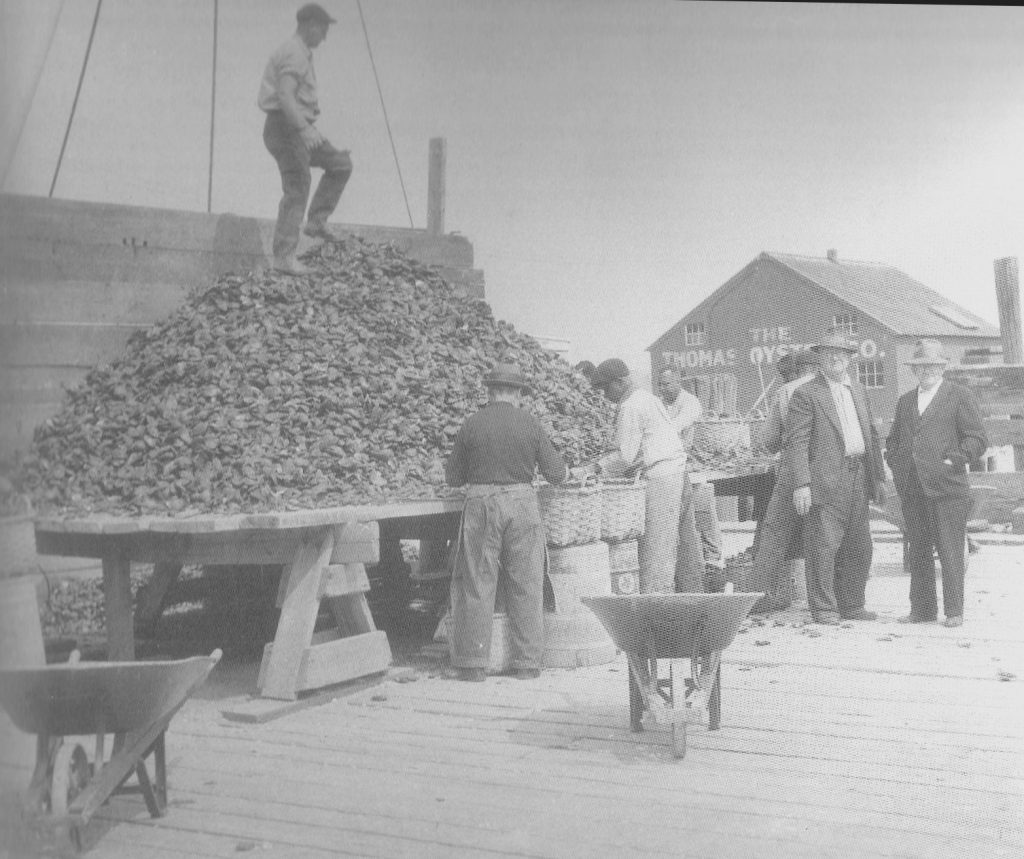By Dan Shine
Voice Columnist

Oystering
See part 2
In 1960, past Historian Lorraine Wood Rockefeller wrote extensively on the subject of oystering for the Town Crier. We are fortunate that this information is still available, decades later. Here are her words in part:
The products of the New Haven oyster beds go into nearly all the markets of the world and the method of planting, growing, and harvesting the bivalves is a study of great interest.
With a warm spring, favorable weather, with the water outside the harbor lines ranging from 66 to 71 degrees, the female oyster will produce several million eggs and will commence to spawn in shoal water in the month of July and in deep water until mid-August. The late spawning does not give the youngsters much chance to grow before winter.
After the oyster spawns, the eggs will float in the water for several days, until they come in contact with some clean shell, stone or other hard substance. Then they will settle down to the bottom and adhere to the prepared beds and grow. Their growth depends much on the weather.
High winds agitate the water to such a degree that the sand and mud is stirred up and can kill an entire bed of young oysters. Then if the oyster can weather the storm there are the drills and starfish to be protected from.
The Indians were oyster-men centuries before John Davenport and his companions settled upon Quinnipiac. Among the shell deposits left by the Indians hard quartz, sharp and perfect arrowheads have been found and one record states that, “in the vicinity of these shell beds, bones of the Indians were formerly found, some being of men six and one-half feet high.”
It is not known just what crude implements of oyster catching the Quinnipiacs used, whether they gathered them in canoes, or, taking advantage of the very low tides caused by westerly gales or waded on the beds, gathering their supply. They harvested for their own use and possibly also reached the mercantile phase of the industry by trading with neighboring tribes. The oyster fishing was conducted for over one hundred and fifty years in much the same manner used by the Indians.
The raising of oysters for market was for many years an important industry although the town waters were later restricted in the culture of the seed oysters. Early fisheries were conducted by individuals who sought fish for food and fertilizer. About 1840, local men banded together in cooperative fisheries and in 1950, a phenomenal catch of drumfish was made. By 1860, the fishing cooperative had disbanded and only a few individuals remained in the business. Homer Smith and his associates bought the seine house and went into the fish business on the Oyster River.
To be continued.